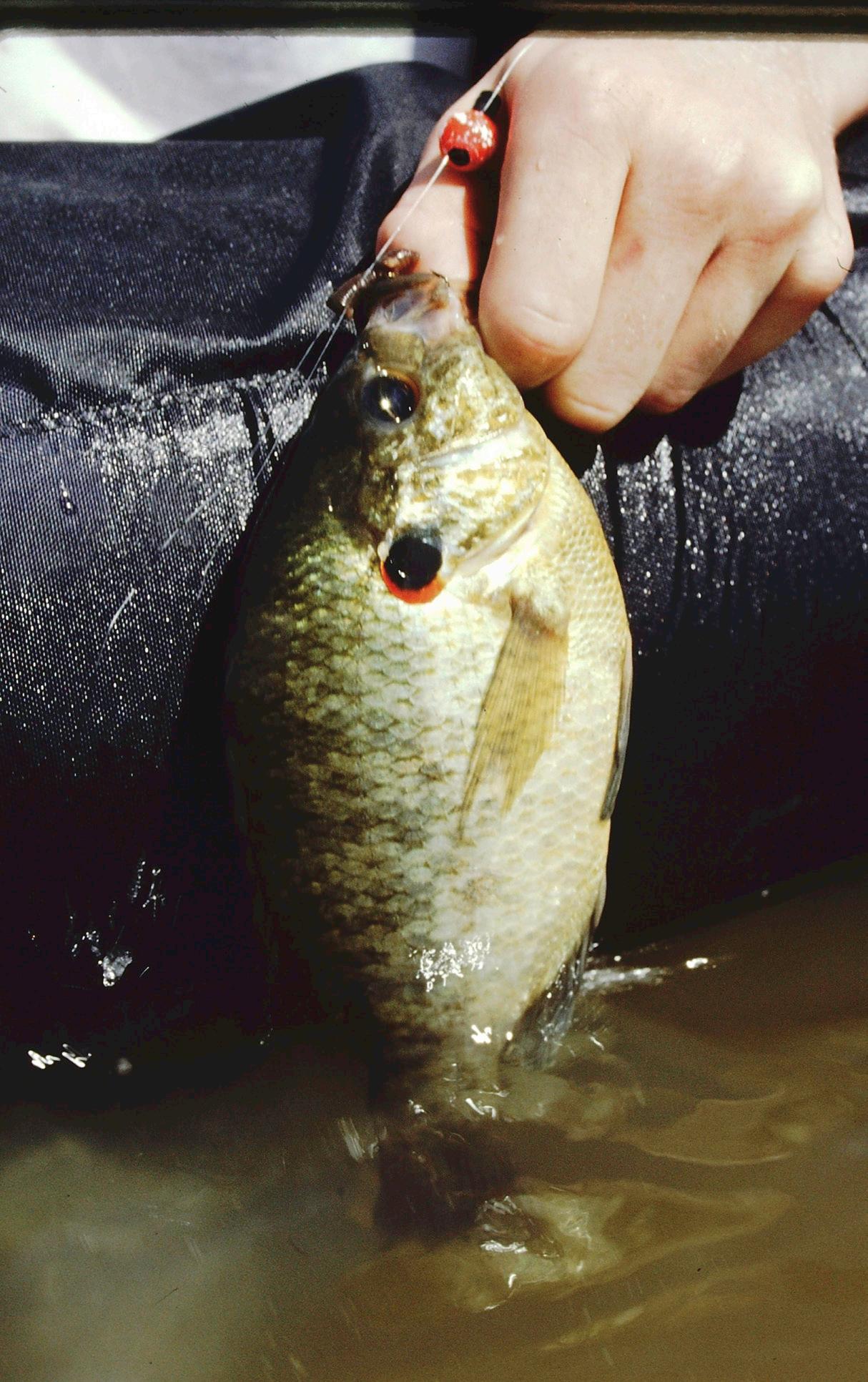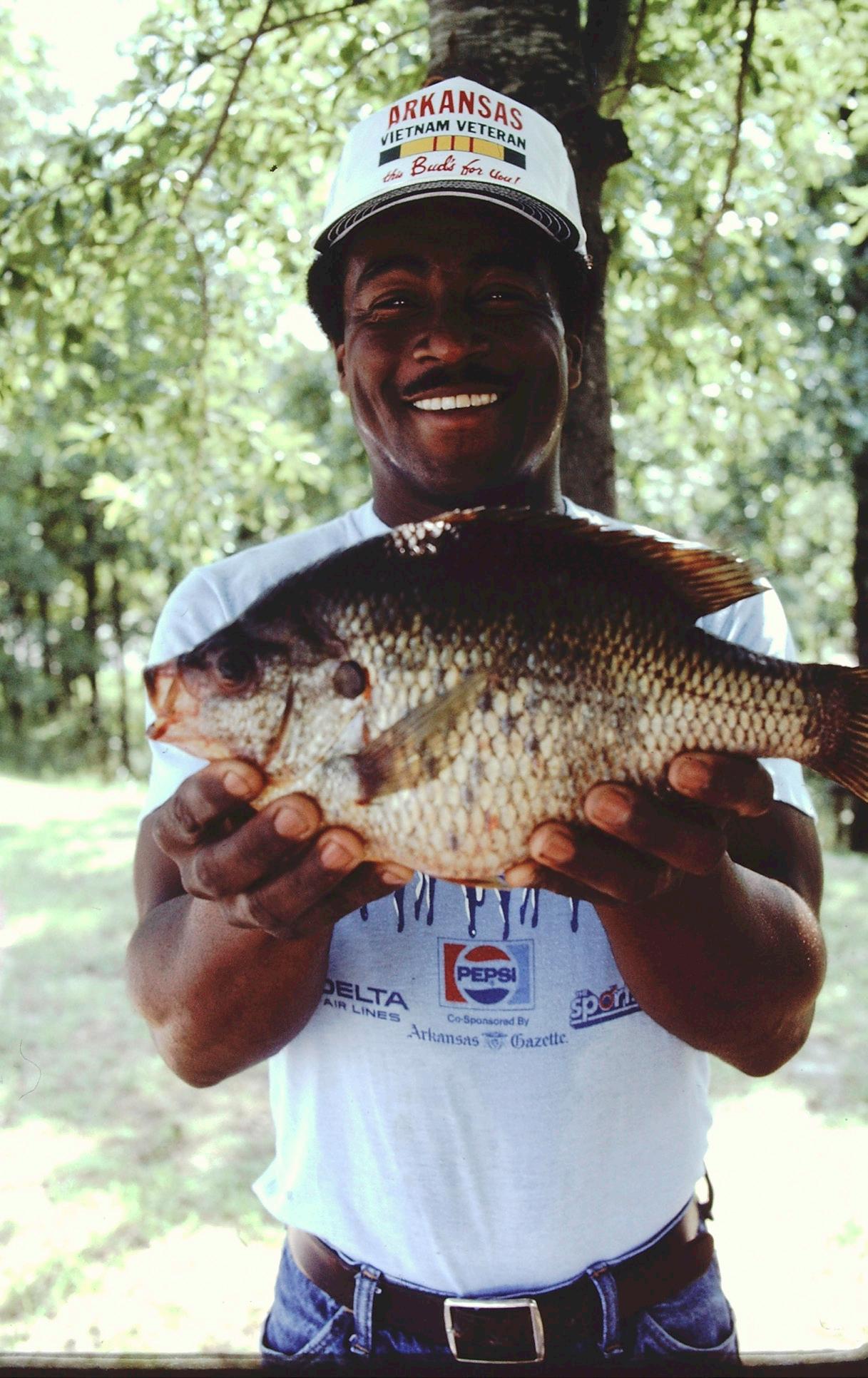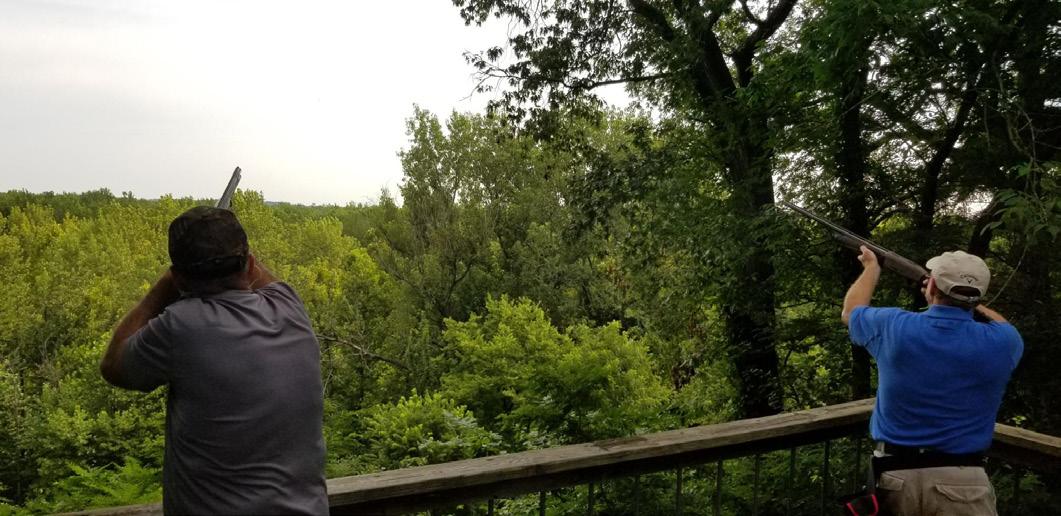
10 minute read
Turning Up the Heat on Summer Redears

Sacking up shellcrackers when they’re on their spawning beds is a cinch. But you have to change your strategy if you hope to keep catching them as the summer solstice approaches. I’ll never forget the first redear sunfish I ever saw. The beast resembled a football more than a fish. Tipping the scales at more than 3 pounds, it was a Goliath of a sunfish. But as redears go, it was nothing to get excited about. To make a run at a world record, you need to boat one over 4½ pounds.
Incredible. That’s bigger than the average largemouth bass. Not surprisingly, the redear is the holy grail of sunfish aficionados. When redears answer the procreative urge in April, a phalanx of anglers can be found dunking live bait over their spawning beds. But with the arrival of summer, redears drop off the average fisherman’s radar, and he contents himself with palm-sized bluegills, or maybe a hefty hybrid if he’s lucky.
For a select few sunfish fanciers well versed in the ways of behemoth panfish, however, redear action continues well into June. Redear experts know that casual anglers don’t is that the “end” of the spawn isn’t an all-or-nothing proposition. Just as some deer continue to engage in mating behavior weeks after the peak of the rut, some redears can be found on or near beds while kids are blowing their allowance money on firecrackers and bottle rockets. So the first place to check when the action on spawning beds begins to flag is around spawning beds.
Redears won’t build nests where the bottom is covered with mud. They like spawning sites with less vegetation than other sunfish prefer. And they show a particular fondness for deeper waters cluttered with old timber, contributing to the nickname “stumpknocker.”
Gradually sloping main points of land that lie in the path of spring lake currents often are ideal redear spawning locations. The currents sweep silt off of elevated underwater plateaus, exposing the sand or gravel bottom. In the upper end of lakes, spots just off the main channel can be redear hot spots. Minor points here may be too exposed to strong currents created by spring freshets to make good spawning sites. But just behind these obstructions, gentle eddies can be sufficient to keep silt swept away. Try fishing such locations early—from before dawn until sunup. Unlike bluegills, which will spawn in two feet of water, redears typically make their nests in 6 to 12 feet of water. Why? They don’t like sunlight. Part of what drives them off their spawning beds is the increasing intensity and directness of summer sunlight. They tend to stay on deeper beds later in the summer, and can be found there on overcast days well into June.
If this fails to produce, you’ll need to start thinking like a tired, spawned-out redear. Starting from the spawning beds, identify the nearest refuges that offer deep, clear water with an abundant supply of their favorite foods.
The redear’s most popular common name, “shellcracker,” reflects an important part of their biology. They are equipped with muscular structures in their throats that allow them to crush and digest snails and small freshwater mussels. These critters don’t do well in heavily silted areas, which is much of the reason why “shellcrackers” inhabit clear, deep waters.
Identify an area with these assets adjacent to spawning beds, and you’ve got a fall-back position for latespring redear angling. As the summer progresses, you’ll find redears in progressively deeper, bigger waters that offer clear water and a relatively clean bottom material, such as sand, gravel, cobbles, boulders or down timber.
Just knowing where to find redears isn’t enough, of course. You have to offer them tempting morsels and do it in a way that enables you to hook ‘em. Because their primary foods (snails) aren’t easy to put on a hook, bait choice is a challenge. Anglers employ grubs, catalpa worms and shrimp with varying degrees of success, but by far, the most popular bait is red worms.
One reason that red worms are such a successful bait is the fact that they are smaller than nightcrawlers. Redears have ridiculously small mouths for such a big sunfish. If you offer them the kind of gob of bait that works well for catfish, they will nibble and peck around at it, driving you nuts and never having to take the whole thing in their mouths.
Some anglers report success with small leaches or half-inch long land slugs gathered from beneath rocks and rotten logs. Whatever you settle on for bait, use it sparingly, encouraging redears to suck in the entire morsel. And to further encourage their gluttony, choose a small hook. Redear specialists most often recommend No. 6 or 8, but even a No. 10 isn’t too small. Cover the hook and leave just enough trailing to wiggle enticingly, and you’re in business.
Then there’s the matter of presentation. Spring, summer, winter or fall, redears are creatures of the bottom. If you aren’t fishing near or on the bottom, you’re not redear fishing. The easiest way of accomplishing this is to use a bobber stop. Determine the depth of the water you are fishing by repeatedly casting to the area and increasing the depth setting three feet at a time until your bobber goes slack. Then back up in one-foot increments until it comes upright again.
If you find the fish less than 10 feet deep, you can dispense with the bobber stop and just cast a longhanging setup. But for my money, the most enjoyable, efficient and effective way to fish deep for redears is with a long pole. Long-poling has come a long way since the days of cane poles. Modern-day incarnations include telescoping models that carry at 4 feet and extend to 10 or 20 feet. These typically have simple winding mechanisms in the butt that store line between outings. Often sold as crappie poles, they are equally ideal for redears. No fussing with bobber stops or casting long bobber-to-bait lines, just nonstop fun.
There is a trick to hooking redears. Because of their undersized mouths, they are unusually prone to nibbling. They will make your bobber dance until you are ready to scream. They’ll even pull it around a little—three inches this way, five inches that, six another—leading to any number of false strikes on the angler’s part. Even patient newcomers to redear fishing pull the bait away from more fish than they will hook. You have to force yourself to wait for the moment when your bobber moves steadily in one direction for a foot or two before gently tugging to set the hook.
(Left) Catching big redears like this one can put up quite a fight on light fishing tackle. (Photo: Jim Low)
(Right )Redears have small mouths, so catching them requires small hooks and sparing use of bait. (Photo: Jim Low)
It also helps to use a small bobber counterbalanced by just enough weight to give it nearly neutral buoyancy. When this rig moves off purposefully while slowly sinking beneath the surface, it’s time for action.
A boat is handy in some redear fishing situations, but completely unnecessary in others. Redears thrive in small to medium-sized lakes where boat launching facilities can be limited, so sometimes, you’ll encounter circumstances where the best water is tantalizingly out of reach of bank casting. In those instances, beg, borrow or buy a float tube of the kind favored by trout anglers. As long as you show a little respect for redears’ need for space and minimize your movement, you’ll find it an effective tool.
Should you be lucky enough to land a truly impressive redear and want to check out its record potential, be sure you do have a redear. This species has been widely stocked outside its original environs, and where introduced, it’s very susceptible to hybridization with bluegills and other sunfish species.
Redears’ body color varies from golden to forest green, with dark spots. It can have from five to 10 darker vertical bars on the upper half of the body. The gill flap has a nearly white edge, with the trailing margin a vivid red in males or orange in females. The rear edge of the jaw hinge does not extend beyond the front of the eye.
The most similar looking sunfish is the pumpkinseed, which has spots on the dorsal fin and blue stripes on the side of the head, both of which are lacking in redears. If your fish shows markings that deviate from these, and which resemble those found on other sunfish species, you probably have a hybrid. Most record-keeping organizations have special categories for “hybrid sunfish,” rather than counting them as one species or another.
One of the most delightful things about the redear sunfish (after it’s fighting ability and excellent flavor) is the plethora of colorful names it has spawned. These include the aforementioned “shellcracker” and “stumpknocker,” as well as: “yellow bream,” “government improved bream,” “Texas bream,” “strawberry bream,” “tupelo bream,” “mongrel bream,” and “Georgia jack bream.”
Jim Low
Why Can't I Hit a Target?
Why am I not breaking these targets? Do you think you can help me? Those of us that work on are Conservation Ranges hear this request quite often and see the frustration that these shooters are having. Most of us try not to advise the shooter unless they request this help or are in real danger of getting hurt.
In most cases, they are delighted to see me and beg for some assistance. I have learned after years of working on the shooting range that even when a person is not shooting very well, they don’t always want any help or advice. Therefore, it is essential to find out what they wish to help with accomplishing. I believe that when a shooter does express a need for assistance, we should be very willing to help them as with many problems, the solution may be rather simple.
Keep your head on the stock. The slightest amount of movement with your head, away or up from the stock, can, and usually will result in a missed target. Many beginning shooters want to hold their faces away from the stock because they fear the felling of recoil. Once one can remove this fear, they are on their way to becoming a better shooter.
Focus on the target, not on the sights. Many beginning shotgun shooters come to us from years of rifle shooting where they have learned to line up the front sight and a rear sight with the target. Shotgun shooting is pointing, not aiming. When you develop your confidence in letting your dominant eye take you to the target and stop trying to aim or rifle shoot, you will break targets.
Keep the gun moving. A stopped gun is usually a missed target. If you shoot where the bird is, not where it will be, you will always be behind the target. We stress the importance of leads and swinging or keeping the gun moving after the shot. This is one of the hardest things to get beginning shooters and even older shooters to do. This is a muscle memory exercise that can be worked on off the range. It is like typing, it just requires training the muscles and the brain to work together.

Following the basic steps will help you improve your accuracy on the range and in the field. (Photo: Courtesy of CFM)
When there is a breakdown on any one of these skills, broken targets are few and frustration is not far behind.
Even when these skills seem to have been mastered, it does not always bring about the desired results. This is when we have to dig a little deeper and ask a fundamental question. Do you know where your gun shoots? It is always a mystery to me that a person would make a great deal of effort to sight in a rifle and never pattern a shotgun.
A common excuse is, it is a scattergun and covers a wide range, and don’t you know they shoot all the same? Want to bet? We indeed get a scattering of shot, but it is vital to see the spot where we get the most concentration of shot. This is referred to as the point of impact. This spot will be the key to breaking more targets and getting good clean kills on live birds. To establish this spot, one needs to work this out on the patterning board, not on flying birds.
Just like sighting in a rifle, doing a good job of patterning your gun requires some assistance. I encourage you to visit one of your local MDC gun ranges. If you need help, don’t be afraid to ask, we are here to assist you.








